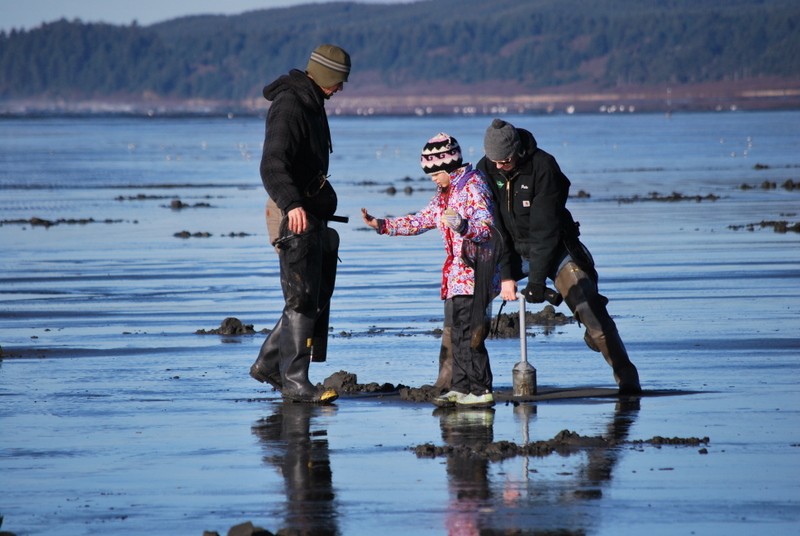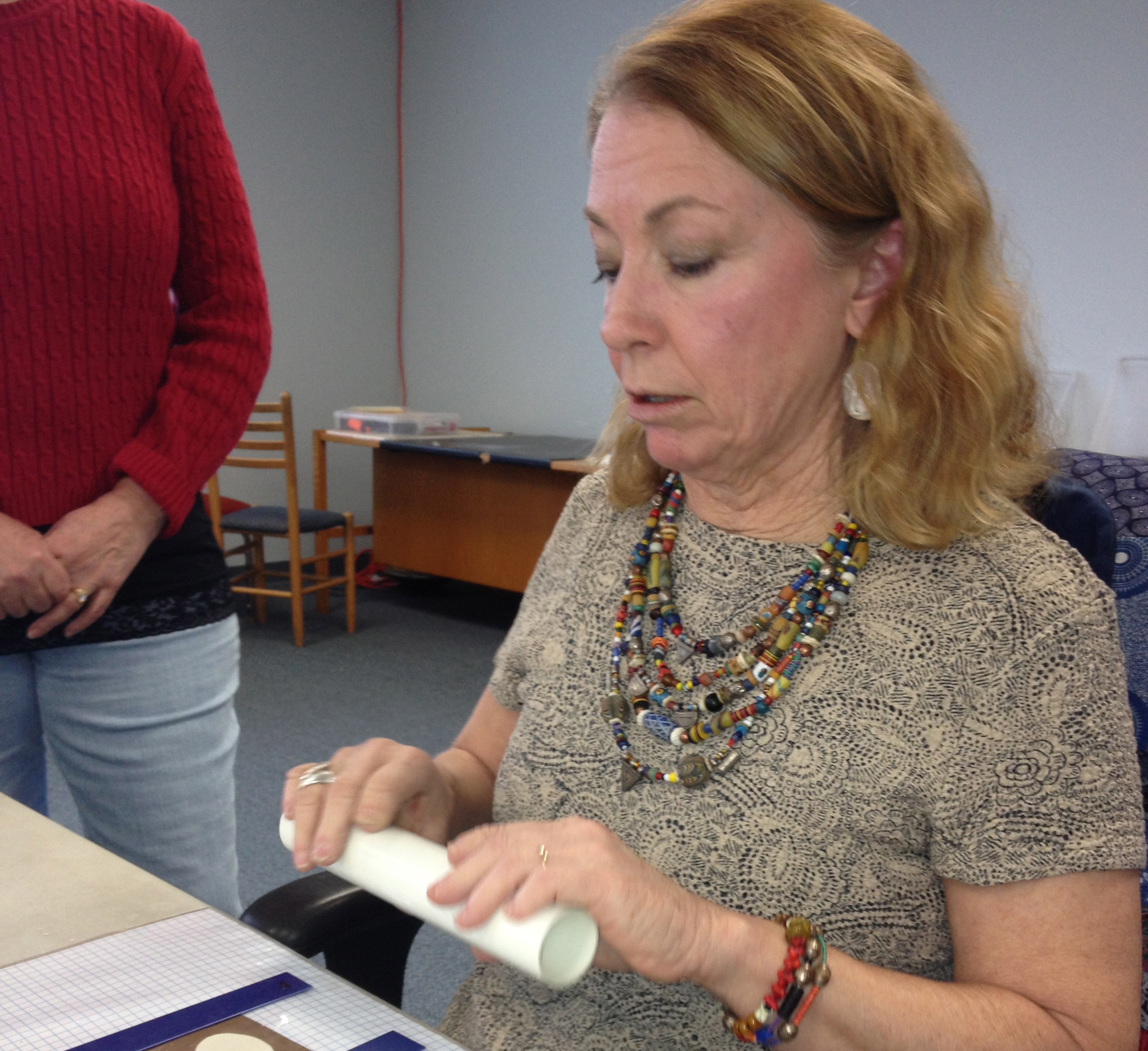By Laurie O’Brien
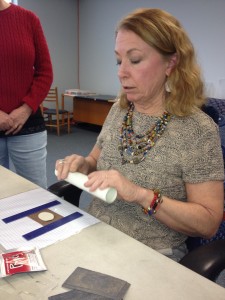
Even if you swear you don’t have a crafty bone in your body, you are bound to be inspired by how easy it is to tap into your creative side when taking a class from the right instructor.
I was recently invited to participate in a Precious Metal Clay (PMC) class at Shipwreck Beads in Lacey. The four-hour introductory class I took, allowed even me, the most artistically challenged student in our small class, to create some special one-of-a-kind pieces that I will treasure.
Shipwreck Beads offers a variety of classes and workshops from basic beading techniques and wire wrapping to advanced PMC techniques. Stephanie Henderson, class coordinator for the store, said that the most popular classes are at the introductory level. “Customers on our showroom floor often just don’t know where to start,” she explained before joining me for our class.
Our instructor for the afternoon is Ruth Greening, an artist and jewelry maker with an impressive resume. Ruth is the Senior Instructor for the Northwestern United States for PMC Connection, a consortium of instructors from across the country. She is a regular instructor at Shipwreck Beads and has also taught and exhibited her work at numerous conferences and shows around the United States.
Ruth starts by explaining that PMC is a fairly new art medium. It consists of tiny particles of precious metal mixed together with an organic binder and water. PMC can be shaped like any clay, but once it is fired, the particles fuse together while the binder burns away. Our finished pieces will be 99.9% pure silver.
The PMC packet is deceptively small. Once we get it in our hands and start playing with the contents, each of us creates a ball that is about the size and consistency of a wad of gum! At this point I wondered how it would be possible to create anything even remotely like the beautiful finished examples Ruth had shown us.
The next steps are the fun ones. Ruth has brought a table full of texturing and shaping tools with her. Everything from rubber stamps to craft scissors to corrugated cardboard can be used to give character to PMC. She warns us that handling the clay too much might cause it to dry out, so if we’re unsure and want to practice, we can always do a trial run with some Play-Doh.
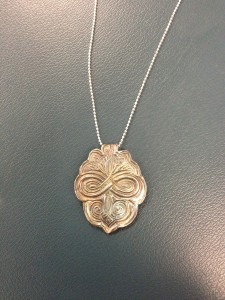
Stephanie shares with me that this is where she got in trouble the first time she took a class. The possibilities were just too endless. This time she has a plan and gets to work rolling out her clay to a fine sheet. She has her eye on a stamp with a tiny repeating pattern. She thinks she’s going to cut the individual shapes out and use them as silver charms on a beading project she is working on.
After much deliberation, I choose a bold graphic to use as my design. It is part of a large rubber stamp, and I know I’ll have to trim away a lot of excess. Ruth reminds us not to scrap our left overs. She has special receptacles – old 35mm film canisters – to collect any shavings. Because Ruth uses PMC regularly, she knows that a little goes a long way, and reminds us that this is silver we’re dealing with. Every gram counts. My goal is to create a pair of earrings, but I end up having enough PMC to create a pendant, too.
Once our creations have been textured and shaped, we move them to the dryer and wait while all the moisture evaporates. Because I have to add a bail, the piece that lets a pendant sit on a chain, to one of my pieces, I have to shape and dry that, too, before attaching the two together and drying them one last time.
Before firing our creations in the kiln, Ruth has us sand any rough or sharp edges. Right now the pieces feel like talc, but once they’ve been fired, they’ll be hard metal and a sharp edge could be dangerous.
There are two ways to fire PMC. While our pieces are cooking in the kiln, Ruth demonstrates a butane torch firing on a pair of earrings she has just crafted. She tells us that many small pieces not incorporating glass or natural stone can be fired this way. Investing in a butane torch like those used in kitchens is much less expensive than purchasing a kiln, and many hobbyists use this method.
When the silver comes out of the kiln, it is white because the fibers are standing on end. Polishing with a stainless steel brush and putting them in a tumbler with stainless steel mixed shot brings out the shine.
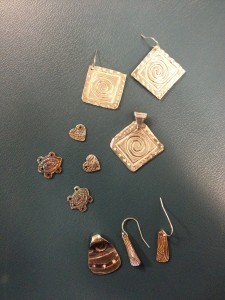
To bring out the depth and contrast in our designs, our final step is to add patina. Some pieces look fine with little to no patina, but silver that has a texture added to it needs some color to bring out the contrast. The variety of colors and the different levels of shading that our small class achieved on our pieces by using just one method lead me to believe that Ruth could devote an entire workshop to patina techniques alone.
I’m pleased with my pieces, and I’ve had friends admire them. How often can you respond to a compliment on your jewelry with “Thanks, I made this!” I think I might go back for another class. My technique isn’t where it should be for one of Ruth’s higher level workshops, but I’ve been toying with some ideas. I knit occasionally, and having custom buttons on a sweater might be really cool. The possibilities are endless.
Shipwreck Beads offers Intro to PMC once a month. You can register for it and other regular classes on their website.
To receive information on additional classes and workshops, you can sign up for their e-mail newsletter or call the store. Stephanie Henderson is the class coordinator.
You can visit Ruth Greening’s website to see some of her original creations.



























